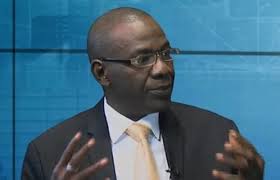Nigeria’s currency, the Naira, closed its exchange rate against the US dollar at black market on Friday, to trade at N780/$1 and representing 1.96% depreciation when compared with the N765/$1 it traded the preceding day.
The latest exchange rate of the local currency marks the highest decline in its exchange value against the greenback since trading commenced in the parallel market this year and since November 21, 2022, when it depreciated to the same N780/$1 mark.
Black market foreign exchange (FX) dealers in the Federal Capital Territory (FCT) told our correspondent that the depreciation recorded by the Naira over the past four days was due to “higher demand for the US dollar amid supply shortfall to the market.”
However, despite its unimpressive exchange rate against the US dollar, the local currency appreciated against the Euro by 0.61% to close the week at an average rate of N815/€1 compared to the N820/€1 it exchanged at during Thursday’s trading session.
But then, the Naira depreciated against the British Pound Sterling by 0.52% at the peak of the trading session on Friday to trade at an average rate of N960/£1. The previous day, it traded at N955/£1
Data sourced from the P2P Exchange platform reflected that the local currency, however, marginally appreciated by 0.33 at the cryptocurrency P2P Exchange market, trading at a minimum of N772.50/$1 compared to the N775.05/$1 it traded the previous day.
As part of its monetary intervention measures, the Central Bank of Nigeria (CBN) has, over the past years, been supplying dollars to FX traders at the both the official window and parallel market to achieve a stable exchange rate for the Naira against other foreign currencies.
Although experts believe that the apex bank’s interventions at the I&E window is affecting the foreign reserves’ accruals, the benefits of the CBN’s monetary policy action on the FX market cannot be over-emphasized given the capacity building for key sectors of the economy, especially in job creation and other value-addition impact to the broad economy.






